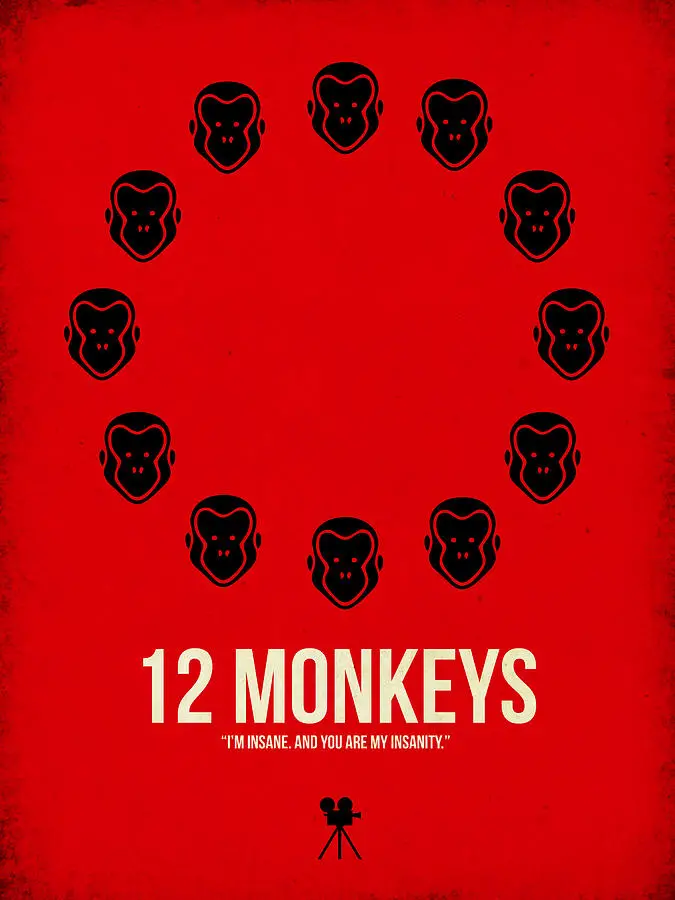Already present in classic works such as the Iliad and the Decameron, the theme of the pandemic apocalypse has been exploited and investigated in recent centuries especially in the field of the Fantastic, in fiction as in cinema: from EA Poe to Conan Doyle, from Meyrink and Lovecraft to Richard Matheson and Stephen King; and again, on the big screen, by directors of the caliber of Bergman, Romero, Carpenter, Cronenberg and Gilliam.
di Jari Padoan
cover: “The Masque of the Red Death”, Roger Corman, 1964
The impact of the worldwide epidemic of covid-19 and the consequent terror of the contagion that marked this 2020 represented, in any case (including the profound effects of mass psychosis), a brutal return of the removed collective for the modern western man: that of the awareness of his finitude and of confrontation with an invisible enemy.
Since its dawn, humanity has had to coexist with the specter of epidemics, and if no direct evidence has been received from the millennia that preceded the invention of writing, the tragic experience of endemic diseases and the threat of contagion inspire painful notes. since the beginnings of Western literature: the same debut as theIliad immediately complained of the horrors of the "malignant disease" unleashed by Apollo on the Achaean army for the religious intemperance of Agamemnon; much later, still in Hellenic land, a historian like Thucydides will describe the plague of Athens of 430 BC (and the terror of the aforementioned, to which the real cause of the ruin of the city is attributed). Centuries later, towards the end of the Italian Middle Ages, also the Decameron by Boccaccio immortalizes the legendary, devastating Black Death of 1348, albeit set, muted and distant, against the backdrop of the narrative frame.
The illustrious cases cited are just some of the most famous, not to mention archetypal, handed down by great literature, and it is not surprising how one of the deepest terrors of man has become a recurring theme both in the realist literature and in religious texts (for example, also in the substantial Judeo-Christian biblical canon there are various references to assorted plagues, whether they have occurred or are in the near future, such as those evoked by theApocalypse Giovanni's) or in the poetic classics, to the point of returning punctually to the modern fiction of the Imaginary and fantastic cinema, through which it has been presented and examined in countless variations.

From Poe to Conan Doyle
In this sense, one of the very first names that comes to mind, within the whole of modern literature, is of course that of EA Poe. In the same nineteenth century that saw the release of The Betrothed, in which Alessandro Manzoni returns the epic portrait of the plague that devastated Milan two hundred years earlier (however attributing to the event a leading role as a manifestation of that Evil necessary for Good, implemented by the designs of Christian Providence), the scepter of first great singer of the terrors of the disease certainly goes to the Bostonian Master of the thrill, thanks to stories like The Masque of the Red Death (1845) and proto-science fiction The Colloquy of Eiros and Charmion (1839). Poe's acute and abysmally restless ingenuity can only push the context of the epidemic theme to the extreme, reaching the dark and chilling results, now proverbial, to which his work has accustomed us.
In the first, famous story, the reader is nailed to the chair by the short and terrifying story of how the Pestilence itself, in a horrible human form, introduces itself to the masked ball of Prince Prospero. In Eiros and Charmioninstead, they are narrated a posteriori, by two disembodied souls, the terrible chronicles that led mankind to extinction, after the environmental catastrophe caused by cosmic dust diffused into the earth's atmosphere by the passage of a huge comet.
As in almost all of his most famous tales of the nightmare, in which the protagonists plunge into the darkness of madness or the absolute unknown (perhaps an exception is The Premature Burial with its "happy ending" more unique than rare), Poe describes the epidemic as a superhuman condemnation without appeal, a divine punishment with unhealthy purple hues or in the form of dazzling cosmic flashes: however it manifests itself, for Poe the disease leads the world as we know it to an inevitable end. However, it should not be forgotten that references to the theme are also found in the ironic and futuristic Mellonta Tauta, or "these things are predictable." The story (published by Poe in 1849, shortly before his death), is set in a XXIX century in which the vestiges of our present society represent nothing more than a confused historical memory.
The distressing theme of the pandemic will be taken up, at the beginning of the following century, by one of the greatest and most famous followers of Poe, namely Sir Arthur Conan Doyle. The creator of Sherlock Holmes was also the author of a vast and remarkable production of fantastic fiction, and in fact wrote in 1913 the long story The Poison Belt (The poisoned cloud), second chapter of the adventures of Professor Challenger and his cronies, former protagonists of the famous novel The Lost World dating back to the previous year.
Also in Conan Doyle's tale, the threat is represented by an enigmatic cosmic cloud whose radiations reach the Earth, unleashing the poisoning of entire nations. It is actually a not so worrying epidemic disaster, as the group of "survivors" discovers with amazement and relief that the effect of the mysterious space gas on the masses was in practice that of a powerful and temporary catalepsy. With the end of this and the putting back in order of the whole humanity the story closes, in an opposite and decidedly positive ending compared to those of Poe's stories.
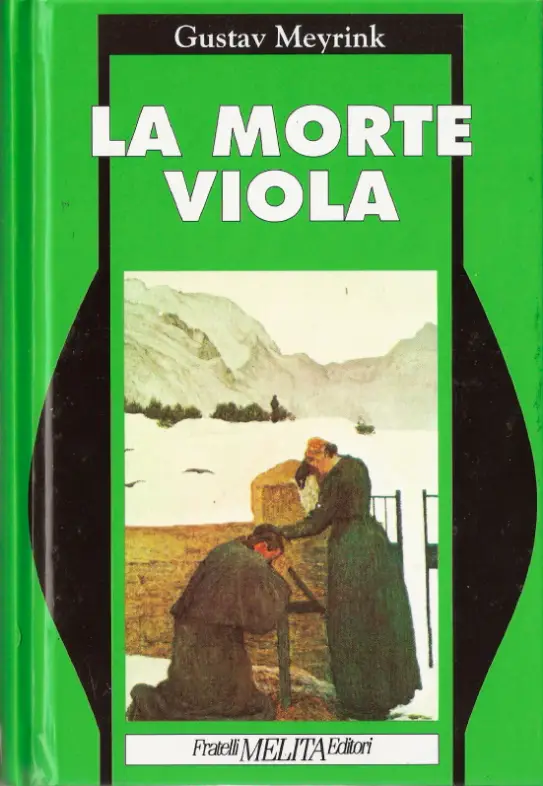
Meyrink and Lovecraft
In the same period, the theme is also dealt with by Gustav Meyrink through its particular Fantastic harbinger of authentic occult symbology and full of sardonic humor. In The violetsAll (Purple death), a short story with disturbing and grotesque “exotic” tones, the author of G tells of an unwary English explorer who reaches out with his servant remote and unknown offshoots of the Himalayas, where a sinister Tibetan sect holds the ancient secret of "purple death". Once that secret is revealed, the world is in trouble. The mysterious purple-hued exhalations released from the lost Tibetan recess spread over the Earth, causing frightening phenomena: if multitudes of people incinerate themselves in spontaneous combustion, the rest of humanity finds itself inexplicably devoid of the sense of hearing (a degenerative effect sensory that recalls what José Saramago will narrate many decades later in his novel Blindness of 1995). An uncomfortable condition which, Meyrink mockingly concludes, "had made Bach, Beethoven and Wagner slip into oblivion"!
Similar references to the unknown regions of the East and to far more remote times and places, from which a frightening "black fever" originates, can be found in The Last Test (published in Italy as The last experiment) of the great master of horror of the twentieth century, HP Lovecraft.
The story, written in 1928, features Dr. Alfred Clarendon, a distinguished bacteriologist and dramatic figure of mad doctor in indirect league with the abominable Great Old Ones. An inadvisable collaboration that takes place, also in this case, with the mediation of a mysterious Asian coven (singular coincidence with the story of Meyrink; that HPL was struck by the story of the Viennese writer?): It is because of his acolytes that the terrible and lethal pulmonary fever from San Francisco will spread "From the dark regions beyond the stars". Originally born, like various other Lovecraft tales, from a revision of the manuscripts of others, The Last Test is one of the most complex stories written by Gentleman of Providence, which powerfully describes the abyss of "cosmic horror" into which the doctor is thrown, the family members who try in vain to remove him from his shameless pursuits, and the whole city, with truly disturbing effects for the 2020 reader: media panic, desolate streets, progressive closure of any public place ...
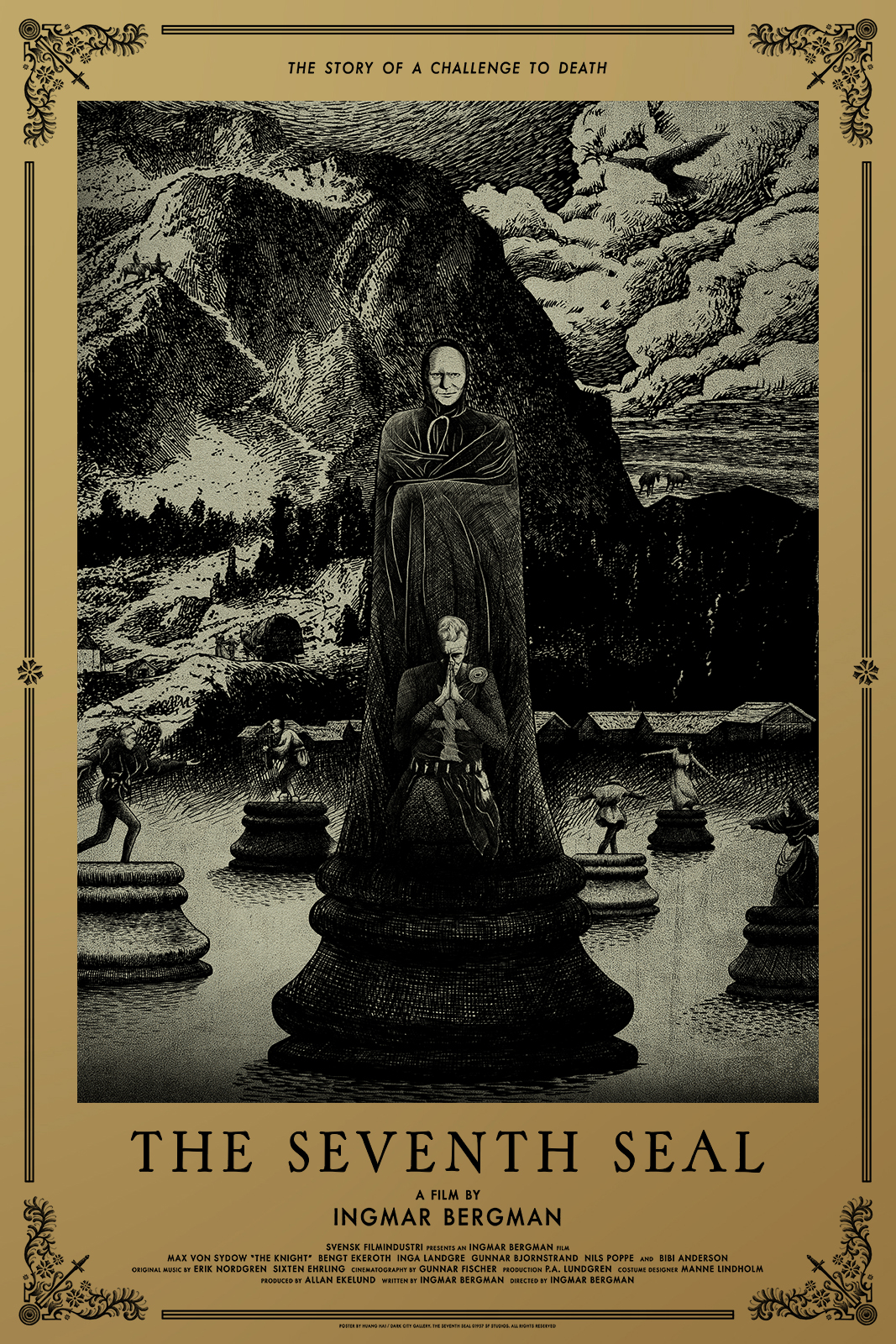
Bergman's "The Seventh Seal"
The specter of the epidemic returns punctually as the backbone of various works even in the second half of the twentieth century. And we would be surprised if the opposite, after the performance of an apocalyptic world war and a new climate of constant international tension on which the threat of atomic war looms like a planetary sword of Damocles. In this key we can read the threat of pestilence that oppresses medieval Sweden portrayed in The Seventh Seal (1956) of Ingmar Bergman.
The film remains an unrivaled masterpiece of the last century and a work of exceptional stylistic and symbolic rigor: the history of cavaliere Antonius Blok, of his chess game with the Great Reaper and his journey in search of the Divine through the shadows and lights of human existence certainly falls within the canons of the best Fantastic, re-proposing on the screen, in a magical and twilight black and white, images and symbols taken from the millenary medieval heritage. Above them in particular she rises, anguished and immanent, the pestilence and its obsession (the scene of the procession of flagellants is still striking today for its dramatic power). If the young "witch" is accused of having triggered the disease and therefore burned alive without any human pity, the victims of the plague will include the knight, beaten at chess by his dark antagonist, and his friends (excluding the family of the young actors, whose salvation seems to give a glimpse of an ending of hope).

From Matheson to Romero
In addition to Bergman's “metaphysical” masterpiece, dark epidemic shadows continue to loom over cinema and the narrative of the Imaginary during the twentieth century, obviously in its darkest and most horrifying aspects. In fact, it was always in the XNUMXs that the name of Richard Matheson begins to emerge as one of the most relevant of the contemporary Fantastic (as well as film and television, considering his work as a screenwriter), and this happens thanks above all to his most famous novel, namely I Am Legend written in 1954, initially published in Italy with the title The Vampires and then with the literal and decidedly more epic and sibylline Io sono leggenda.
With this book, long considered a classic ofhorror science fiction and post-apocalyptic, the American author writes not only the first major variation on the vampire subgenre since Dracula by Stoker (and we are talking about 1897), but at the same time it updates the theme of the devastation of the human species by an unknown and unstoppable disease that does not limit to bring death on a global scale, but generate an undeath pandemic rapidly shared by anyone infected. Doctor Robert Neville, totally isolated and increasingly on the verge of alienation, fights a hopeless struggle every night against an entire world of vampires, for which he, the only human still alive, has become the monster, the "legend". .
Matheson's subtle narrative manages to delineate the landscape of utter desolation and terror experienced by Dr. Neville (and by the entire planet, in the numerous analyzes that reveal the background of the story and the spread of the pandemic), and the importance of the novel is demonstrated. not only from the three official film versions, shot between 1964 and 2007 (among which we like to remember in particular the first, the spooky The last man on Earth by Ubaldo Ragona with the great Vincent Price as Neville), but by the fact that Matheson's book pointed a new way to horror cinema. In fact, the novel was the main inspiration for the famous Night of the Living Dead (Night of the living dead), shot from George A. Rosemary in 1968.
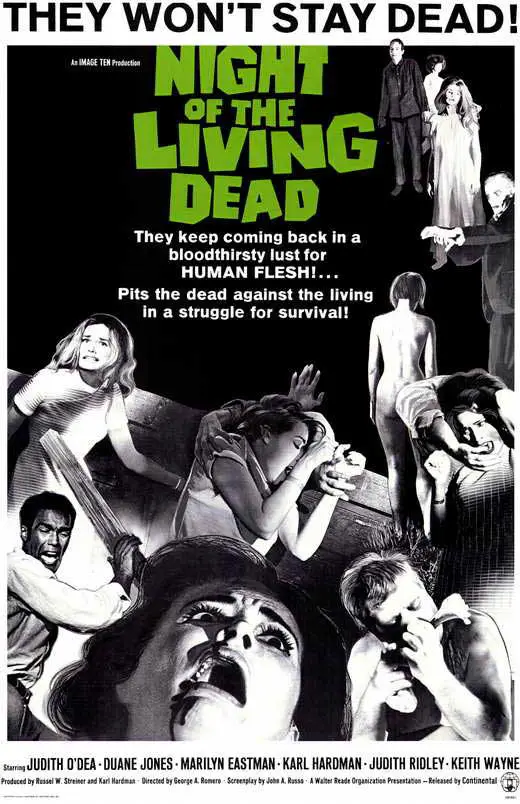
Indeed the film retains the main ideas of Io sono leggenda: that ofunstoppable dehumanizing epidemic (moreover, once again coming from space, in a direct connection both with Matheson's novel and with the illustrious antecedents of Poe, Conan Doyle and Lovecraft), and that of the monstrous siege (in Romero's film instead of the lonely Neville we find a small group of survivors, gathered to try a desperate resistance), with the slight variation of the living dead anthropophagous, freely inspired by the figure of the zombie Haitians, instead of the more "classic" vampires dedicated to the search for fresh blood.
Equally representative it is The Crazies (The city will be destroyed at dawn), shot by Romero in 1973, in which we witness the mass murder madness unleashed in an American town, after the accidental spread of a terrible gas expected for the bacteriological warfare. The films of George Romero, and in particular the famous Night, will generate an infinite series of epigones, both official and apocryphal, among which the "zombie" themed films of Lucio fulci shot in the eighties (in particular Zombi 2, while the masterpieces make their own history gore like The afterlife e Fear in the city of the living dead, lavish with quotations Lovecraftian), as well as a title such as Sulla città Incubo contaminata, shot from Umberto Lenz in 1981.
In the film by the Tuscan director, whose name is famously linked to genres such as thriller and the "Italian" detective story, we are witnessing a powerful amalgamation of horror, bordering on splatter, represented by the office of contaminated radioactive (voracious undead particularly angry and snappy) and a powerful social criticism aimed at irreversible environmental pollution and the prevailing consumerism. Epidemic and contaminating phenomena, Lenzi's film suggests, far more real and fearsome than any army of zombie mutants.

Carpenter and Cronenberg
Remaining within the scope ofhorror modern cinema, and how this has staged the theme of the horrendous mutations triggered by diseases as infernal as they are infectious, the work of authors such as the Canadian David Cronenberg (think of Rabid o The demon under the skin) and the US John Carpenter.
The great director began a career of more than thirty years with now legendary films for thriller and the contemporary Super like District 13, Halloween e 1997 - Escape from New York, and runs between the eighties and nineties the ideal trilogy of horror apocalyptic in which the theme of contagion and the monstrous epidemic are basic: we are talking about the chilling The thing (The Thing, 1982), The Lord of Evil (Prince Of Darkness, 1987) e The seed of madness (In the Mouth of Madness, 1994). The atmosphere of explicit inspiration Lovecraftian it is almost palpable in the masterpieces horror in question, which looked at today, however genuinely “artisanal” still demonstrate their visionary and disturbing power intact.
Whatever the horrible cause (be it a polymorphic alien entity precipitated from space in the ice of Antarctica, a greenish fluid hypostasis of metaphysical Evil or an enigmatic cursed novel), in Carpenter's aforementioned films, what breaks down the boundaries of life and nature as we know it is always an interplanetary and / or demonic threat, which transforms and dehumanizes the psychophysical structure of man. Not only that, but each of the three works ends with an open ending that leaves the viewer with the little reassuring prospect that monstrous mutations can occur on a global scale, with the same modalities of the transmission of a virus: The thing the two survivors remain suspended in a frightening uncertainty as to who may be infected; in the Lord of Evil the threat of the coming of the Antichrist (and of the accompanying diabolical mutations) is averted, but only temporarily; in the Seed of madness there is no more hope and the Great Ancients take possession of the world (Carpenter does not call them that, but if they are not They are the first cousins), through a humanity now monstrously degenerate. Unless it's all the brainchild of ex-detective John Trent, played by Sam Neill…
In Carpenter's film, absolute evil spreads across the globe through, it should be said, the viral success of the books by Sutter Cane, writer horror mysteriously disappeared into thin air that «sells more than Stephen King". And the very famous (not to say overexposed ...) American author, "pupil" of Matheson, Bradbury and Lovecraft, personally contributes to the theme with the novel The shadow of the scorpion (The Stand, 1978), which he narrates the odyssey of survivors of an epidemic disaster caused by a bacteriological weapon, and which also sees the first appearance of the character of Randall Flagg, the evil and ineffable sorcerer later active also in other works by King (The Eyes of the Dragon and the saga of Black Tower).
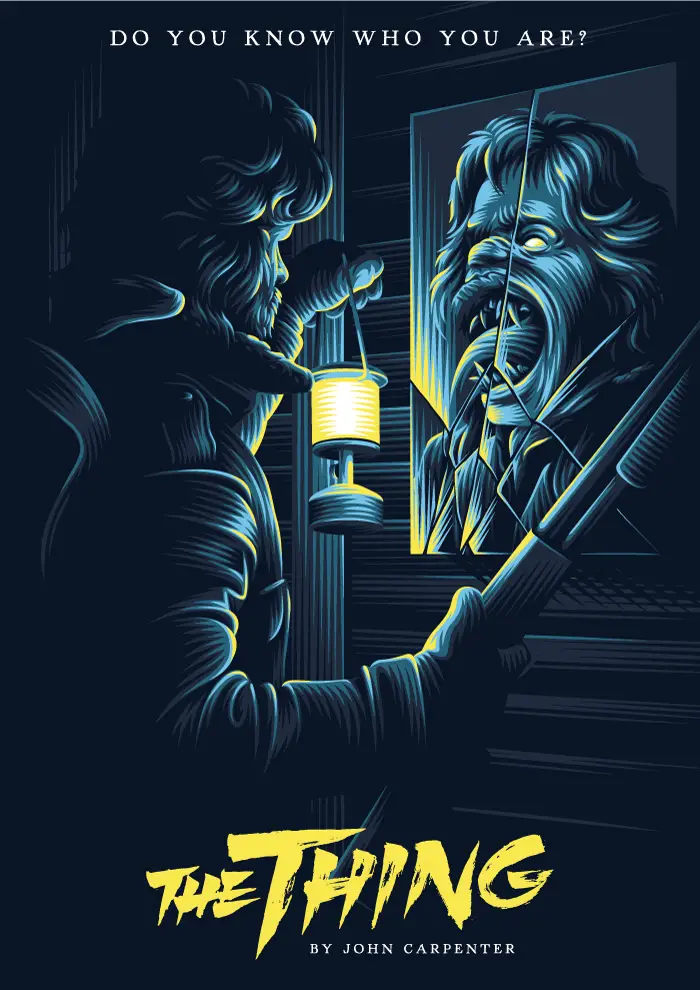
Modern apocalypses on the big and small screen
In 1996 the film was released The army of the 12 monkeys (12 Monkeys), of English Terry Gilliam, famous for his films with a bizarre and colorful style like the famous one Brazil. The film, which stars the movie star action Bruce Willis, updates the theme by combining it with the sci-fi motif of the time travel: the solution to the problem of a lethal pandemic is to avert it before purchasing, of its explosion, or at least groped to do so.
Another British production to report is 28 days after (28 Days Later), shot from Danny Boyle in 2002, in which we find the consonant desolate urban landscapes and the hordes of (sub) humans degenerated into aggressive bloodsucking mutants, directly reminiscent of the vampires of Matheson and the contaminated ones of Lenzi. Not a small detail (and prophetic?), the super-rage epidemic comes from improper genetic experiments carried out on some monkeys: the modified virus is then successfully transmitted from the animal host to man ...
The last decade has also seen the huge success of the horror television series The Walking Dead, yet another reinterpretation of the theme of the "zombifying" epidemic (excuse the sequence of curious adjectives borrowed from the famous Caribbean term), whose references are clear and remembered a few lines above.
After this certainly not exhaustive review, we just have to sit and see which and how many other variations on the theme will come from fiction, cinema and television series after this new one, and we hope by now averted epidemic wave with which we are still confronting. Which obviously will not be the last, and which has unleashed in man terrors that are anything but new, but rather, as the Fantastic always testifies in these cases, very ancient and indeed everlasting; come back one more time, fearfully, current and concrete.
